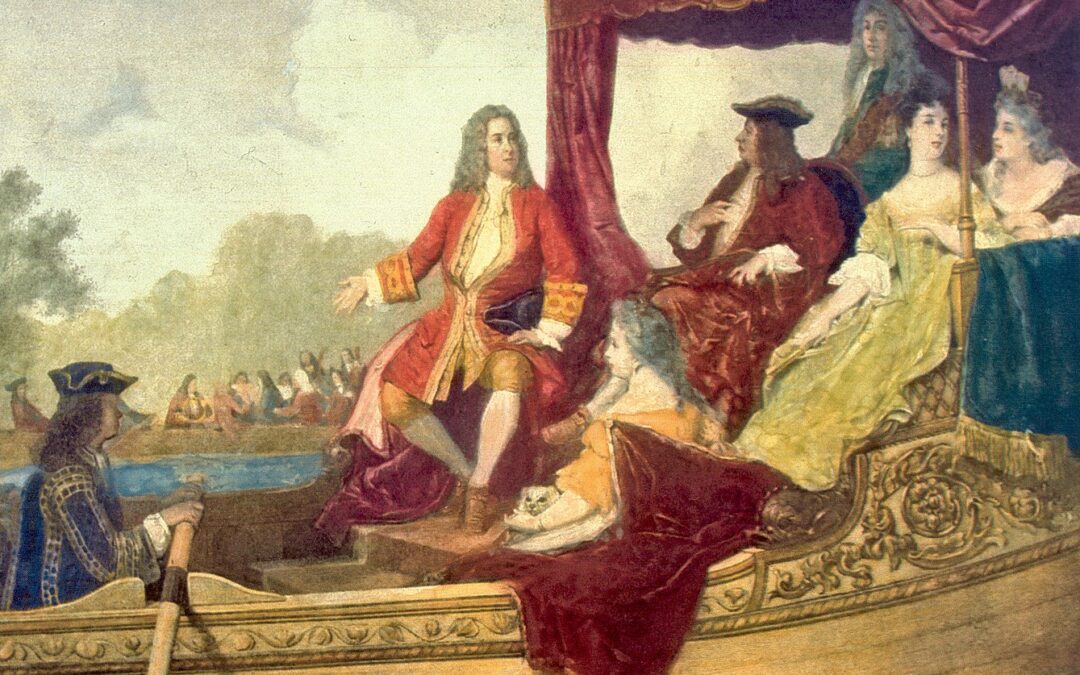10 minutes. Instrumentation: 2 oboes, 1 bassoon, 2 horns, 2 trumpets, timpani, and strings.
Born in Germany the same year as Johann Sebastian Bach, Handel worked as a composer in Hamburg and Italy before settling permanently in 1712 in London, where he completed the bulk of his work. He is consistently recognized as one of the greatest composers of his age.
The Water Music resulted from King George I’s commission for a grand, public concert on the River Thames. It premiered in 1717 from a barge of 50 musicians floating upstream on the evening tide, along with a barge carrying the king and several aristocrats. Many other Londoners also took to boats and barges to enjoy the concert. When the tide turned, the procession reversed course back to its starting point. The king was so pleased that he ordered the Water Music to be repeated at least three times in both directions.
The Water Music is divided into three suites, with Suite No. 2 known as the “Trumpet Suite.” The first, fast-tempo movement begins with a fanfare in the trumpet and horn and then moves to a regal dotted-note motif with other virtuoso twists. The second movement, “Hornpipe,” is one of Handel’s most famous instrumental compositions. Its syncopations make it an instant earworm. Although most often called a minuet due to its triple meter, the stately, binary-form piece that comes third in the D major suite in fact carries the heading “Coro,” or Chorus. The fourth movement, “Lentement,” is pensive and provides the only minor moment in the suite. The final movement, “Air” – really in the rapid style of the bourrée – is to be played three times, leaving it up to the musicians to decide what, if any, textural contrasts might be nice each time around.
Suite No. 2 from The Water Music
HWV. 349
Composed in 1717
By George Frideric Handel






